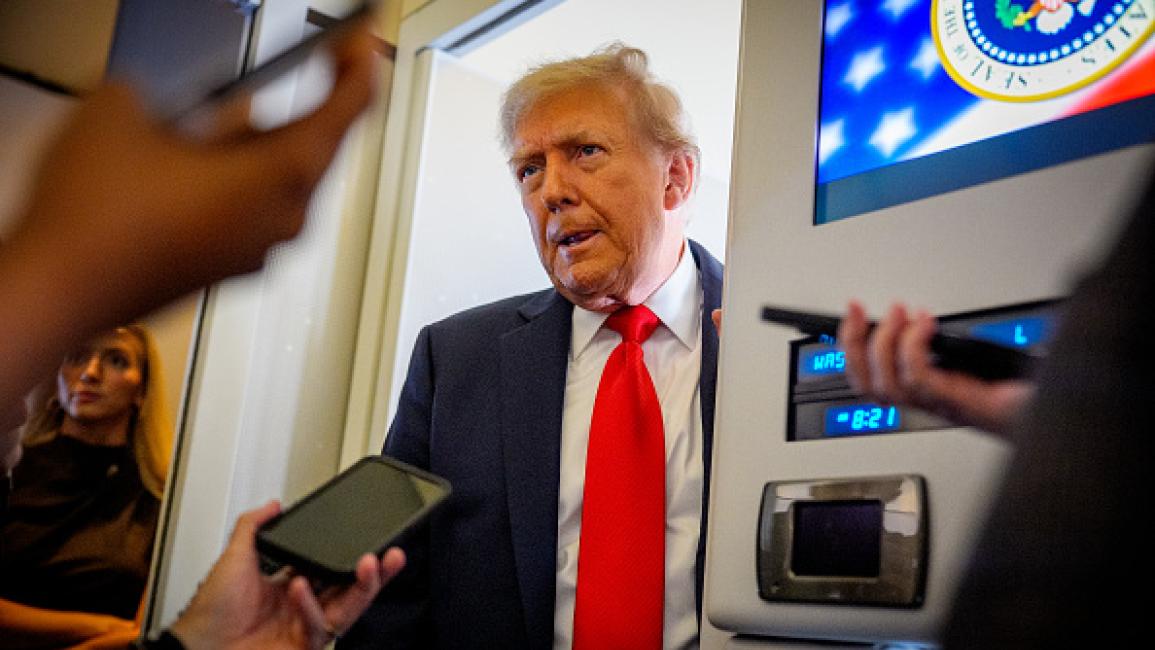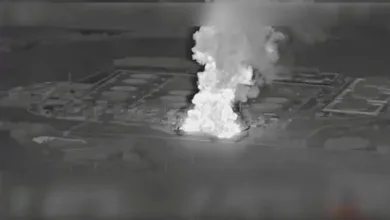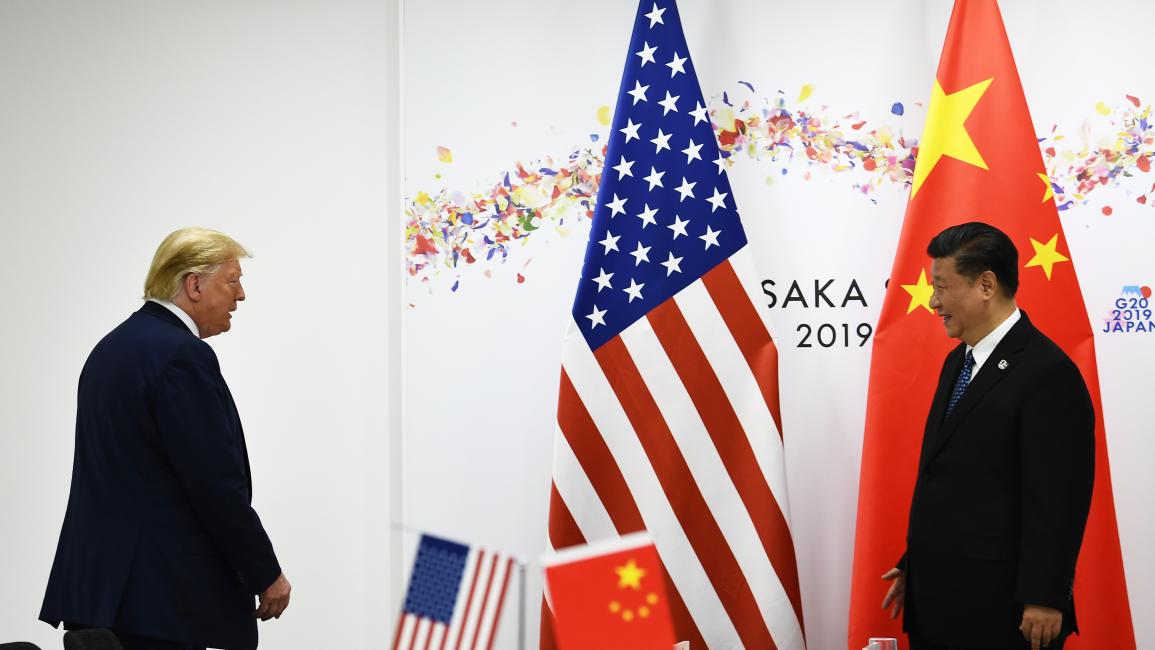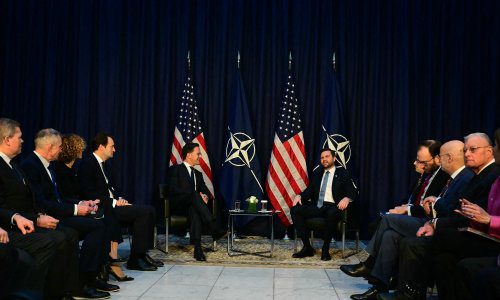Trump Outlines 3 Possible Outcomes for Alaska Summit with Putin

As the Alaska Summit kicked off on Friday evening between U.S. President Donald Trump and Russian President Vladimir Putin, Trump himself outlined three potential outcomes for the talks. Western officials have described the summit as “the most significant negotiations between the West and Russia” since the onset of the Ukraine war in February 2022. The summit’s duration may range from as short as five minutes, if unsuccessful, to approximately six hours, according to Russian sources.
Trump News reports indicate that the first scenario Trump envisions is a ceasefire, coupled with the initiation of a tangible peace process between Russia and Ukraine. However, Trump tempered expectations for immediate results. Speaking to reporters at the White House on Thursday, he said: “All I want to do is set the tone for the next meeting, which should happen soon after the first session.” He added on Friday that he seeks a rapid ceasefire and emphasized that he would be dissatisfied if this did not occur today.
While traveling on Air Force One en route to Alaska, Trump told journalists that he would know “within minutes whether Putin is serious about ending the war and whether another meeting will follow soon.” He reiterated his desire for a ceasefire, stating: “I want certain things… I want to see a ceasefire. This has nothing to do with Europe; Europe will not tell me what to do, but they will participate in negotiations. I want to see the ceasefire quickly, and I don’t know if it will happen today, but I won’t be happy if it doesn’t.”
Scenario Two: Partial Agreements and Continued Talks
The second scenario involves reaching preliminary understandings to continue negotiations without immediately achieving a ceasefire. Trump appears to consider this scenario more likely, though he still hopes for direct outcomes from today’s summit. He said: “I won’t be happy if the ceasefire doesn’t happen today… Everyone said it couldn’t be today, but I just want the killing to stop.”
Trump left the possibility open for either the first or second scenario, indicating that “something will come out of this meeting.” Analysts suggest that this reflects a strategic approach, keeping options flexible while signaling to Russia the importance of immediate progress. Observers in U.S News coverage note that Trump also emphasized economic engagement, pointing out that Putin brought numerous Russian businessmen to Alaska.
Scenario Three: Summit Collapse and Escalation
The third scenario, raised repeatedly by Trump in recent days, is the rapid breakdown of negotiations, leading to escalation and potentially new sanctions on Russia. Speaking to Fox News from Air Force One, Trump said: “We will go to the meeting with Putin, and I believe it will end well. If it doesn’t, I’ll return home quickly.” He added that he would leave if the summit proves unsuccessful, highlighting the high stakes and unpredictability of the Alaska talks.
Context of the Alaska Summit
The Alaska Summit comes at a crucial time in the ongoing conflict between Russia and Ukraine. Since the February 2022 invasion, multiple diplomatic initiatives have attempted to broker ceasefires and peace agreements, with varying degrees of success. Analysts note that the presence of high-level economic representatives alongside Putin underscores Russia’s intent to maintain not only political leverage but also strategic economic influence.
Experts covering World affairs emphasize that Trump’s approach seeks to balance diplomatic engagement with public signaling. By outlining three potential outcomes, the U.S. President communicates expectations both to domestic audiences and international stakeholders. The Alaska Summit thus represents not only a negotiation table but also a stage for strategic messaging.
Potential Implications for U.S.-Russia Relations
Should the first scenario materialize, with a ceasefire and meaningful peace negotiations, analysts predict significant relief for Ukraine and reduced tensions across Europe. However, scenario two—partial agreements without an immediate ceasefire—may extend the conflict, requiring sustained diplomatic pressure from both the United States and European allies. In the case of scenario three, the breakdown of talks and potential escalation would likely prompt renewed sanctions, military posturing, and increased volatility in international markets.
Experts further highlight that Trump’s emphasis on immediate results, including economic considerations, reflects his broader foreign policy strategy. By leveraging both political and economic channels, the administration seeks to create incentives for Russia to engage seriously in negotiations, a theme widely covered by Breaking News outlets.
Strategic Observations and Analysis
Political analysts argue that Trump’s three-scenario framework is deliberately flexible, allowing for rapid adaptation depending on Putin’s responses. The approach is intended to maintain diplomatic pressure while avoiding a public perception of failure. This strategy also keeps open the possibility of follow-up summits or parallel diplomatic initiatives in Europe and Asia.
The inclusion of economic representatives from Russia suggests that trade, investment, and sanctions relief are implicit components of the summit discussions. Observers in Trump News note that these factors could influence Putin’s willingness to compromise on military objectives, adding a critical dimension to the negotiation calculus.
Conclusion
As the Alaska Summit unfolds, all eyes remain on the interaction between Trump and Putin, with potential outcomes ranging from immediate peace breakthroughs to rapid negotiation failure. Analysts underscore that the summit’s results will not only affect the trajectory of the Russia-Ukraine war but also broader U.S.-Russia relations, European security, and global economic stability.
The three scenarios outlined by Trump provide a structured lens through which policymakers, media, and the public can interpret developments in real time. Whether the summit achieves a ceasefire, partial agreement, or collapses into escalation, the implications will resonate across World and U.S News reporting platforms for weeks to come.




